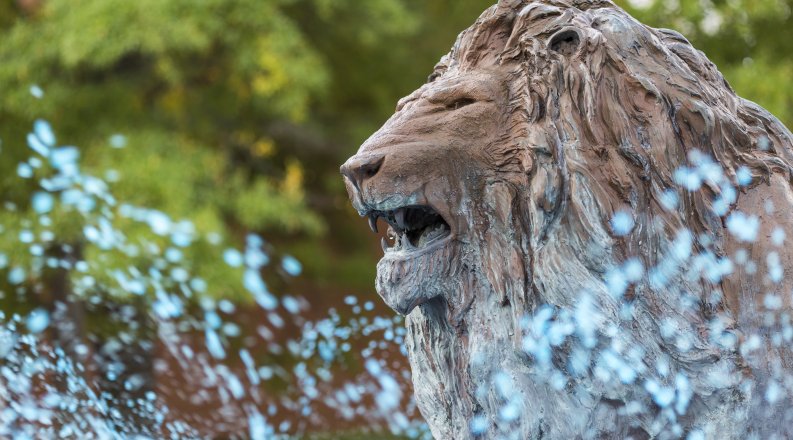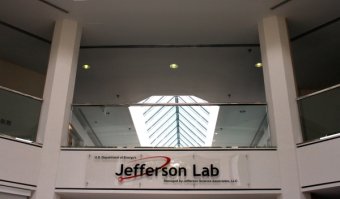It is a very large development in a field that involves very small things.
Old Dominion University helped lead a group of southeastern universities to secure a $500,000 grant from the Commonwealth of Virginia to create the Center for Nuclear Femtography (CNF), in support of the science and technology programs at the Thomas Jefferson National Accelerator Facility (Jefferson Lab) in Newport News.
The initial funding was for the 2018-19 fiscal year in Virginia, and renewal funding of $500,000 was also approved for fiscal year 2020.
Nuclear femtography is a technology only a generation old that involves forming images of not just atoms, but of the quark and gluon components of subatomic protons and neutrons as well.
Charles Hyde, ODU Eminent Scholar and chair of the Department of Physics, said before the development of nuclear femtography, it was thought that forming images of subatomic particles was impossible because the energy waves required to produce such an image would disturb the structure of the particles.
However, in a series of papers in the 1990s, a group of theoretical physicists including ODU's Anatoly Radyushkin found a way around the problem "that allows high energy experiments to construct 'tomographic' images of the quarks and gluons inside the proton, the atomic nucleus and other sub-atomic particles," Hyde said.
Femto is an abbreviation for one part per million-billion, or one-tenth to the power of 15. The radius of the proton is slightly less than one femto-meter, which is 100,000 times smaller than the typical radius of an atom.
ODU President John R. Broderick is chair of the executive committee of the coalition of 54 mostly southeastern universities, known as the Southeastern Universities Research Association (SURA), which won the grant to create the CNF. "President Broderick has been very active in promoting the value of Jefferson Laboratory to the Commonwealth," Hyde said.
Last December, the CNF hosted the Virginia Symposium on Imaging and Visualization in Science, an event which brought together dozens of scientists from around the world, including specialists in nuclear physics, data visualization, medical imaging and artificial intelligence.
Hyde said the meeting provided three key insights:
- New mathematical and computer visualization tools can help understand the performance of the particle detectors at Jefferson Lab. These detectors are producing enormous volumes of raw data following the recent completion of the $340 million upgrade to the electron beams and detectors.
- These computational tools are also essential for constructing images from the nuclear femtography data.
- The J-Lab program in accelerator operations, particle detection and nuclear femtography provides a test bed for these potential breakthroughs. "This is a unique opportunity to beta-test these machine learning and visualization ideas before they are implemented in far less controlled environments," Hyde said.
The CNF has also provided seed funding for six projects to be completed by Oct. 1 of this year, including ODU's Nikos Chrisochoides' "High Performance Computing in Nuclear Femtography" research study.




